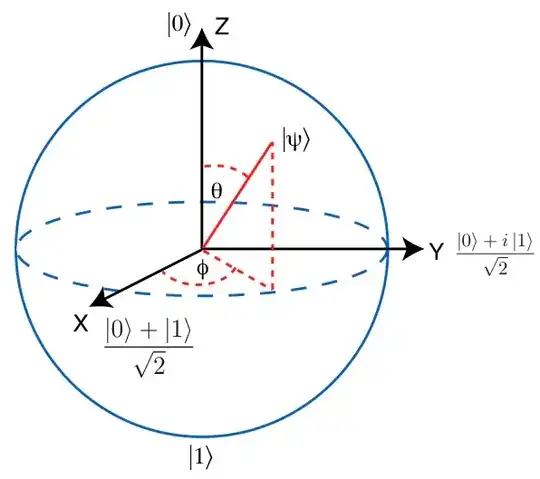$\newcommand{\ket}[1]{|#1⟩}$
Let's assume the state $\ket{\Psi}$ is written in an arbitrary basis, say $(\ket{a},\ket{b})$, as:
$\ket{\Psi} = \alpha \ket{a} + \beta \ket{b}$, where $\alpha$ and $\beta$ are complex coefficients
Denoting the eigenvalues of the basis as $A$ and $B$ respectively, according to Born's rule of measurement, there is a probability $|a|^2$ of measuring $A$ and $|b|^2$ of measuring B.
Given a state $\ket{\alpha}$, $\ket{\alpha_{\perp}}$ is its orthogonal state. Writing the states as vectors, the two vectors are orthogonal. It is true that in a Euclidean vector space of dimension $n \geq 3$ (3D space, if you will), a vector has infinitely many orthogonal vectors. In the case of a 1-qubit state, however, we're actually in the $n = 2$ case! In geometric terms, we're in 2D space. This means that we actually have only two vectors that are orthogonal to the vector in question.
To know which one to choose, we have to refer to the Bloch sphere representation of 1-qubit bases.

On the Bloch sphere, two orthogonal vectors are colinear. To find an orthogonal vector of another vector in order to form a basis, we just take the vector obtained by central symmetry. For instance, in the above figure, if we take $\ket{\psi}$ defined by the angles $\theta$ and $\phi$ as the vector, the other vector $\ket{\psi_{\perp}}$ will be defined by the angles $\theta + \pi$ and $\phi + \pi$.
Now as to what $\ket{\alpha}$ with $\alpha = \frac{\pi}{4}$, I believe it means a vector with $\theta = \frac{\pi}{4}$, as the $\phi$ angle is just responsible for a phase constant and does not affect measurement. In short, pick any vector with $\theta = \frac{\pi}{4}$, then find its orthogonal vector by central symmetry.
I've only very rarely encountered this notation however and find it very confusing, especially for an introductory text in quantum computing.
The section below is meant to prepare you for the same notation you just encountered in a different context, so as to prevent you from confusing the two.
Usually, quantum circuits have registers of width not bound to 1 qubit. While there is no ambiguity in the case of 1 qubit, the following notations can be used in the case of multi-qubit registers (in order of decreasing explicitness), where we choose the binary representation of the number $5$ as the state of a 3-qubit register.
- $\ket{1} \otimes \ket{0} \otimes \ket{1}$
- $\ket{101}_3$, the subscript denoting the width of the register
- $\ket{5}_3$, where we switch to decimal base
- $\ket{5}$, where we forego the width of the register
The $5$ which we chose arbitrarily before, can actually be any positive (unsigned) integer representable with 3 qubits.
For 1-qubit numbers, a basis has 2 elements (in the computational basis, $\ket{0}$ and $\ket{1}$).
For 2-qubit numbers, the basis has 4 elements (in the computational basis, $\ket{00}$, $\ket{01}$, $\ket{10}$ and $\ket{11}$).
For $n$-qubit numbers, the basis has $2^n$ elements.
Notice that the aforementioned bases can also be written with the notation conventions as:
- $\ket{0}$, $\ket{1}$, $\ket{2}$, $\ket{3}$, in the case of $n = 2$
- $\ket{0}$, $\ket{1}$, $\ldots$, $\ket{2^n - 1}$, in the general case
